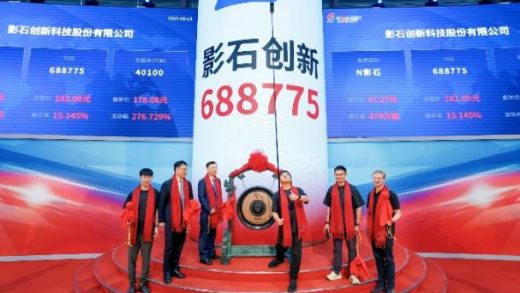I. Industry Risk Analysis
(1) Policy Risk
From the perspective of the policy life cycle, the policy risks in the waste tire recycling industry are concentrated in three stages: During the policy adjustment period, the upgrading of environmental protection standards may force enterprises to transform their production processes at high costs in the short term (such as the iteration of pyrolysis technology); during the policy implementation period, the inconsistent local regulatory scales may lead to a sharp increase in the compliance costs of enterprises operating across regions (for example, strict inspections of illegal workshops in some areas may cause shocks to the raw material supply chain); during the policy withdrawal period, if the tax incentives or subsidies decline (such as the reduction of the immediate refund ratio of value – added tax for comprehensive utilization of resources), enterprises with heavy – asset models will face the risk of cash – flow rupture, and new entrants may encounter the situation where the market space is squeezed by the excess production capacity spawned by the existing policy dividends.
(2) Economic Risk
Currently, the waste tire recycling industry is significantly affected by economic cycle fluctuations: During the economic downturn, the weak automobile consumption leads to a contraction in the supply of waste tires. Coupled with the slowdown in the growth rate of fuel – powered vehicle ownership, the stability of the raw material side is weakened; at the same time, the fluctuations in the demand of infrastructure and manufacturing industries directly affect the downstream orders of products such as reclaimed rubber and pyrolysis oil. The lag in price transmission exacerbates the risk of inventory backlog. The sharp fluctuations in international oil prices cause fluctuations in the costs of natural rubber and new tires, suppressing the premium space of recycled materials. And there is a possibility that environmental protection policy subsidies will decline during the economic contraction period, further squeezing profits. The heavy – asset nature of the industry combined with the tightening of the credit cycle leads to an increase in the financing costs of equipment upgrading and capacity expansion. Small and medium – sized enterprises are under pressure on their cash – flow under the squeeze of shrinking demand and rigid costs.
(3) Social Risk
The generational consumption differences lead to the risk of differentiated social acceptance in the waste tire recycling industry: The younger generation pays more attention to environmental protection issues and has a high acceptance of green recycling technologies and circular economy models. However, the traditional consumer group still has the inherent perception that “waste is garbage” and may resist the construction of recycling stations; the market is significantly driven by policies, and the fluctuations in local government subsidy intensity directly affect the profitability of enterprises; the NIMBY (Not In My Back Yard) effect in communities is prominent. Residents of different generations have the contradictory psychology of “supporting environmental protection but opposing the construction near my home” towards tire treatment facilities; the lack of industry transparency leads to a trust crisis. Generation Z consumers are more likely to magnify the doubts about the pollution hazards in the recycling process through social media, directly affecting the project implementation process.
(4) Legal Risk
Entrepreneurs entering the waste tire recycling industry face multiple legal risks: In terms of environmental protection compliance, illegal stacking or burning that causes soil pollution may trigger administrative penalties under the “Law of the People’s Republic of China on the Prevention and Control of Environmental Pollution by Solid Wastes”. Enterprises with sub – standard treatment processes will face fines of up to 500,000 yuan from the ecological environment department; in terms of safety production hazards, a fire caused by spontaneous combustion of tires will result in civil compensation and criminal liability; the lack of recycling and disposal qualifications constitutes illegal business operations and will be forcibly shut down. Transporting waste tires across provinces without obtaining the hazardous waste transfer form will be suspected of illegal transfer; in the tax area, the lack of invoices when purchasing tires from individual sellers is likely to be regarded as false invoicing. The inconsistent inspection standards of local regulations on the site area and fire – fighting equipment of recycling enterprises lead to a sharp increase in compliance costs.
II. Entrepreneurship Guide
(1) Suggestions on Entrepreneurial Opportunities
Currently, entrepreneurial opportunities in the waste tire recycling industry are concentrated in the integration of high – value – added industrial chains: With the increasing penetration rate of new energy vehicles and the tightening of environmental protection policies, the deep – processing technologies of waste tire pyrolysis carbon black and reclaimed rubber powder have met the commercialization conditions. Entrepreneurs can rely on the construction of regional recycling networks, integrate upstream channels such as auto repair shops and logistics fleets through digital platforms, focus on developing niche scenarios such as modified asphalt additives and sports field elastic mats, and simultaneously layout the R & D of miniaturized pyrolysis equipment. By jointly building “mobile and distributed treatment stations” with industrial parks, the problem of high transportation costs of traditional centralized treatment plants can be solved.
(2) Suggestions on Entrepreneurial Resources
Focus on the government’s circular economy subsidy policies, integrate regional auto repair shops and logistics points to form a stable raw material supply chain, cooperate with university research teams to develop low – temperature pyrolysis technology to reduce processing costs, introduce environmental protection industry funds to set up sorting centers and pre – treatment equipment, sign exclusive sales agreements with tire recycling enterprises to lock in downstream channels, use the Internet of Things to build an intelligent recycling platform to monitor the flow of tires in real – time, jointly build a solid waste treatment demonstration base with local governments to obtain tax incentives, open up the recycling channels for scrap tires in highway service areas through industry association certification, and give priority to recruiting technical partners with hazardous waste treatment qualifications to improve the compliance system.
(3) Suggestions on Entrepreneurial Teams
Focus on the capabilities of technology R & D, environmental protection compliance, and supply chain integration, and form a core team covering mechanical engineering (to solve recycling technology problems), environmental protection law (to ensure compliance with policies and ESG standards), and industrial product sales (to open up B – end auto repair shops/municipal cooperation channels). Give priority to recruiting members with experience in solid waste treatment or the automotive aftermarket; set up a regional partner mechanism (distribute equity according to the coverage radius of recycling points), and bind front – line operators through piece – rate dividends for equipment operation + special government subsidy bonuses; establish a technology sharing alliance with local tire treatment stations to make up for the short – term shortage of sorting capacity.
(4) Suggestions on Entrepreneurial Risks
Entrepreneurs in the waste tire recycling industry should first establish a stable raw material supply system, sign long – term recycling agreements with auto repair shops, 4S stores, and car dismantling factories to avoid idle production capacity due to insufficient raw materials; when choosing sorting and crushing equipment, they need to balance processing efficiency and environmental protection indicators to ensure compliance with the utilization specifications of renewable resources in the “Law of the People’s Republic of China on the Prevention and Control of Environmental Pollution by Solid Wastes”; in the processing link, focus on controlling the environmental protection risks of rubber pyrolysis technology, build supporting waste gas treatment devices and keep third – party test reports to cope with surprise inspections; in sales channels, simultaneously layout industrial customers of rubber particles (such as plastic runway manufacturers) and C – end customers (such as fitness equipment retailers) to disperse the risk of market price fluctuations; apply for the immediate refund policy of value – added tax for renewable resources in advance and use the refunded tax for equipment technological transformation to improve compliance.





